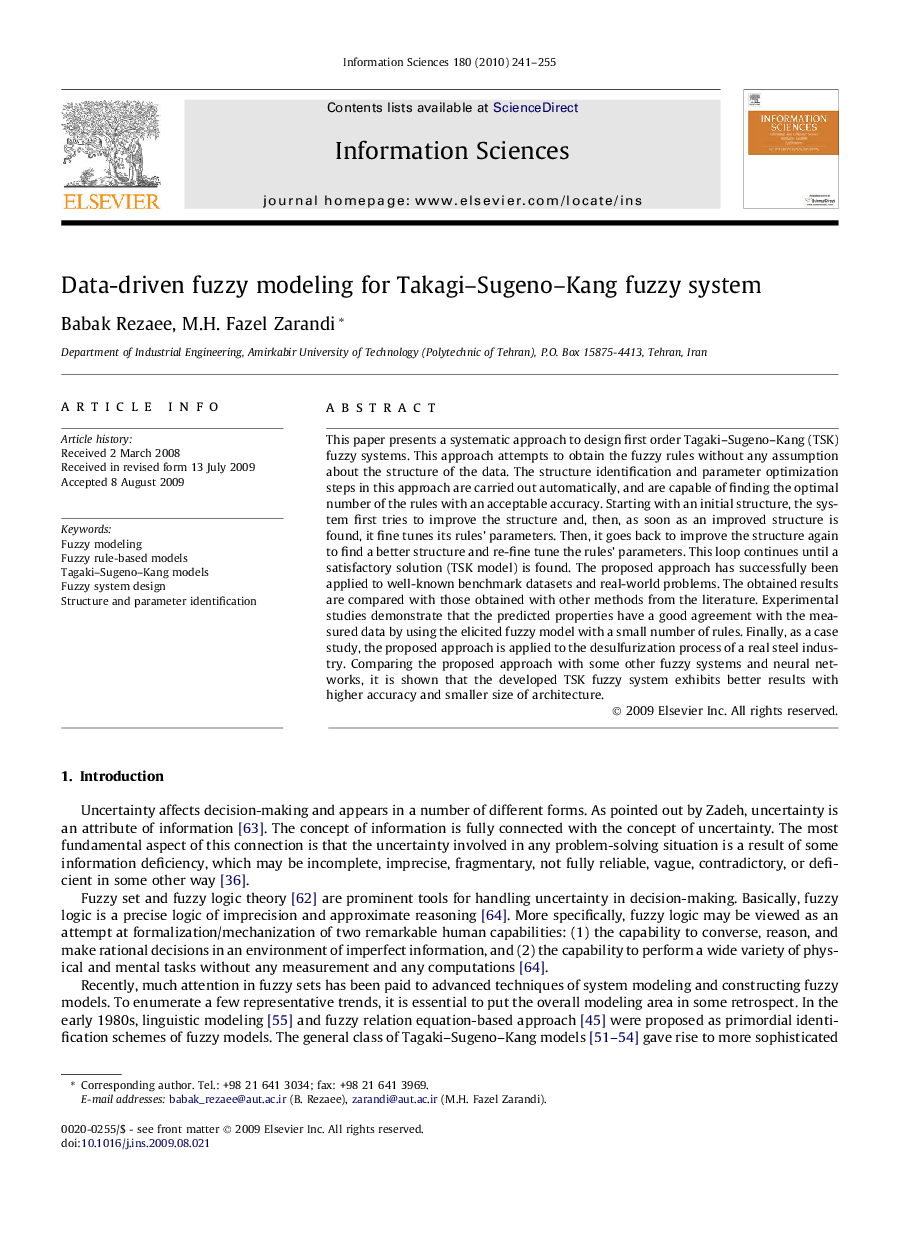| Article ID | Journal | Published Year | Pages | File Type |
|---|---|---|---|---|
| 394425 | Information Sciences | 2010 | 15 Pages |
This paper presents a systematic approach to design first order Tagaki–Sugeno–Kang (TSK) fuzzy systems. This approach attempts to obtain the fuzzy rules without any assumption about the structure of the data. The structure identification and parameter optimization steps in this approach are carried out automatically, and are capable of finding the optimal number of the rules with an acceptable accuracy. Starting with an initial structure, the system first tries to improve the structure and, then, as soon as an improved structure is found, it fine tunes its rules’ parameters. Then, it goes back to improve the structure again to find a better structure and re-fine tune the rules’ parameters. This loop continues until a satisfactory solution (TSK model) is found. The proposed approach has successfully been applied to well-known benchmark datasets and real-world problems. The obtained results are compared with those obtained with other methods from the literature. Experimental studies demonstrate that the predicted properties have a good agreement with the measured data by using the elicited fuzzy model with a small number of rules. Finally, as a case study, the proposed approach is applied to the desulfurization process of a real steel industry. Comparing the proposed approach with some other fuzzy systems and neural networks, it is shown that the developed TSK fuzzy system exhibits better results with higher accuracy and smaller size of architecture.
